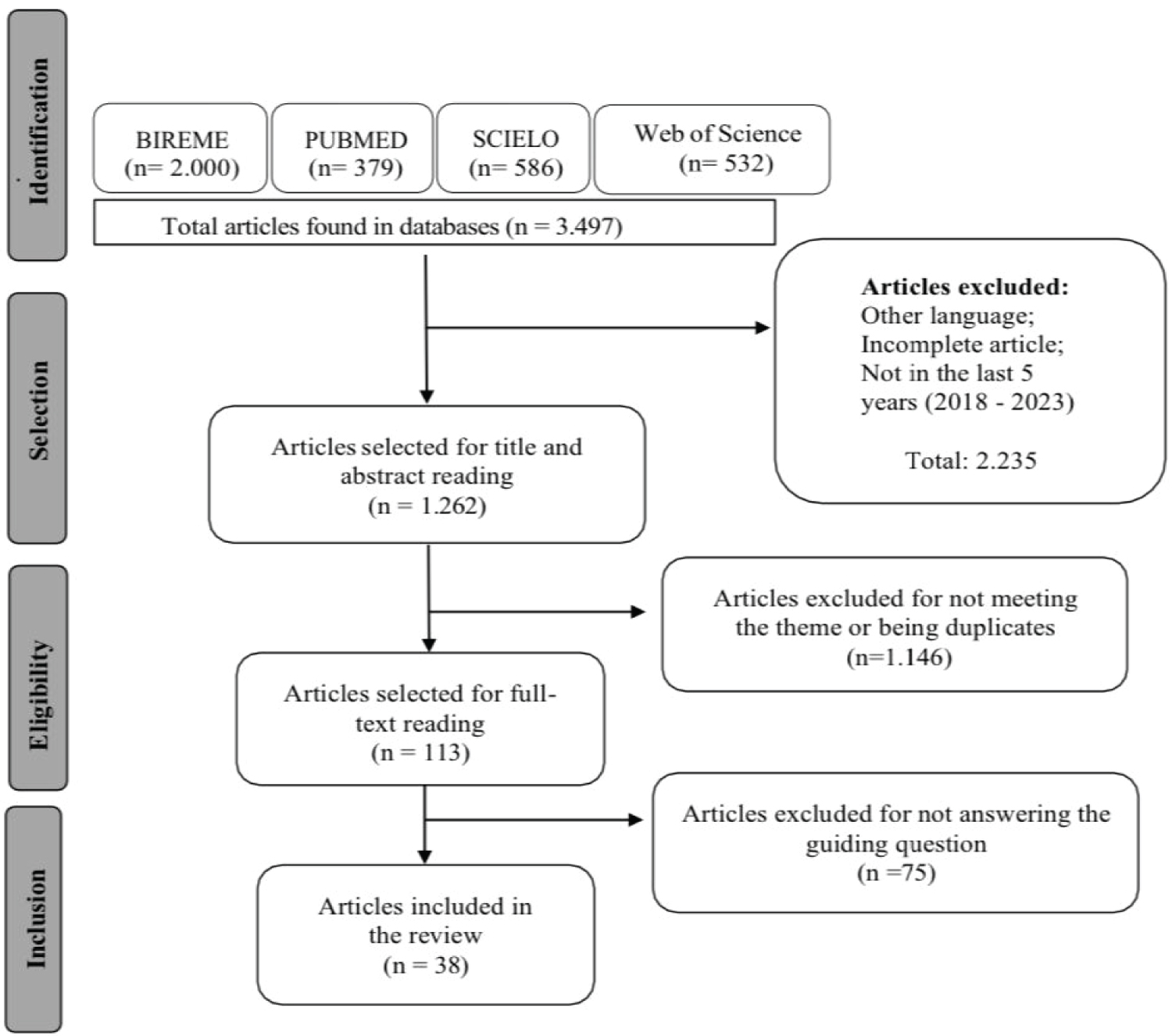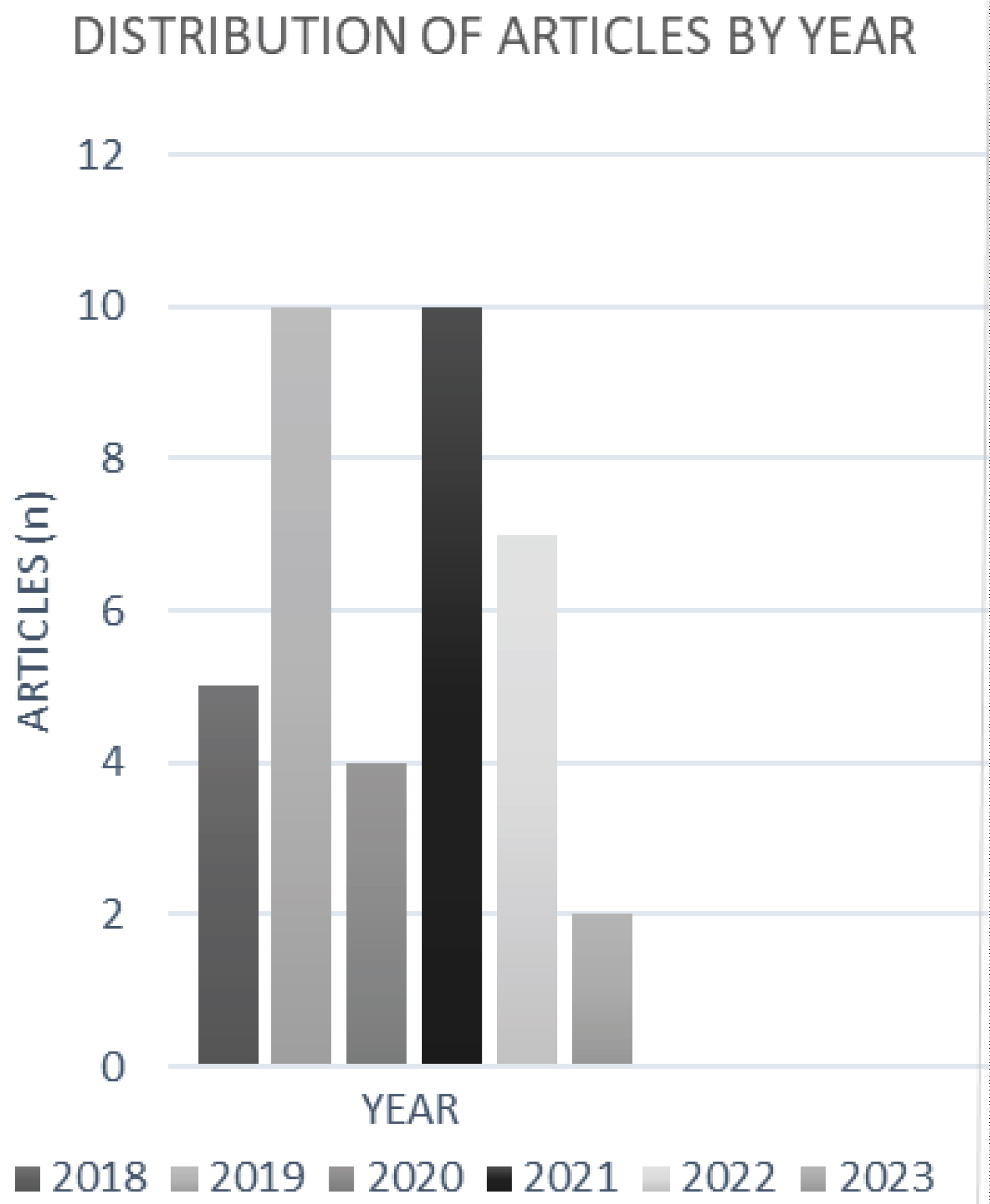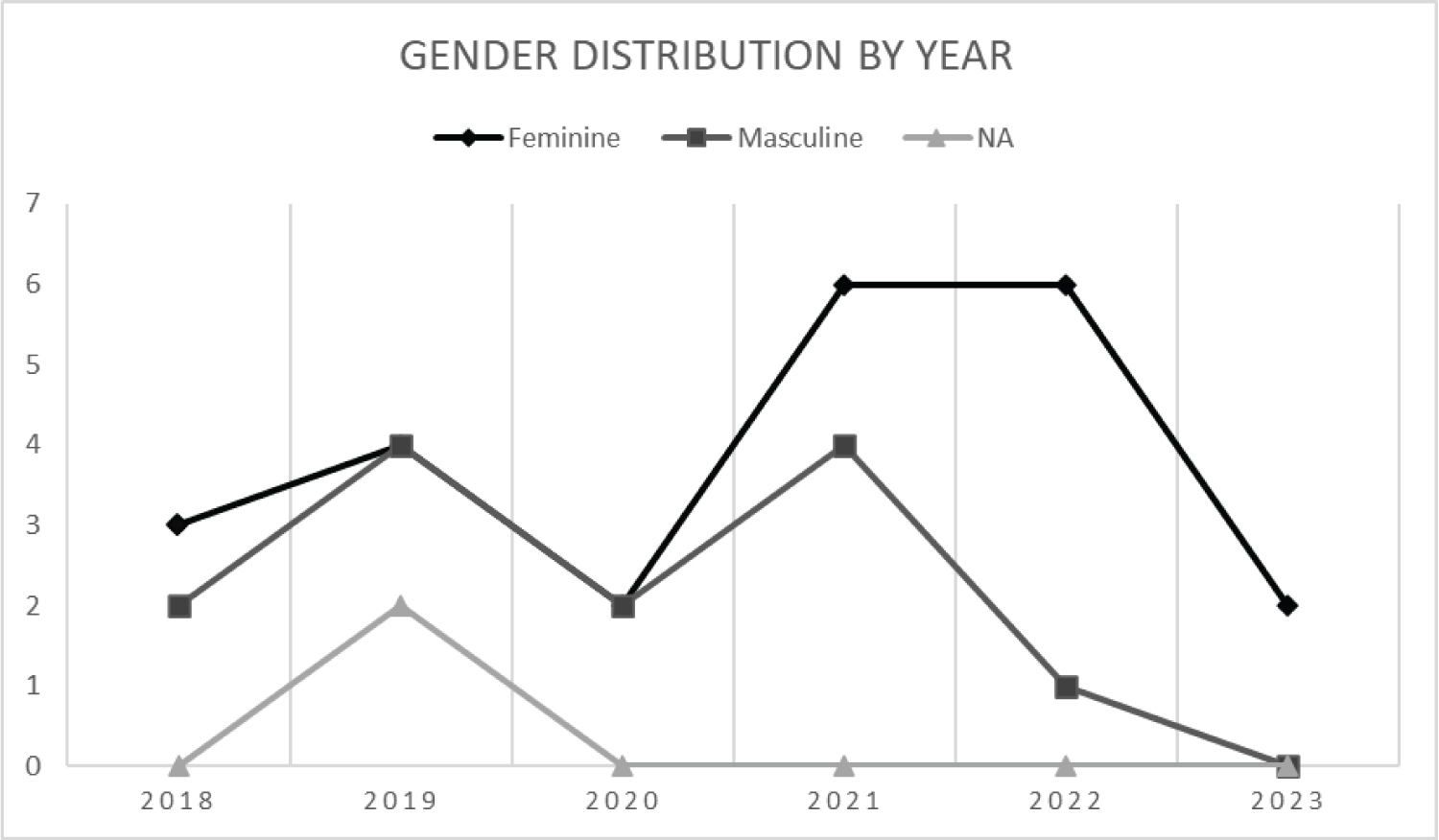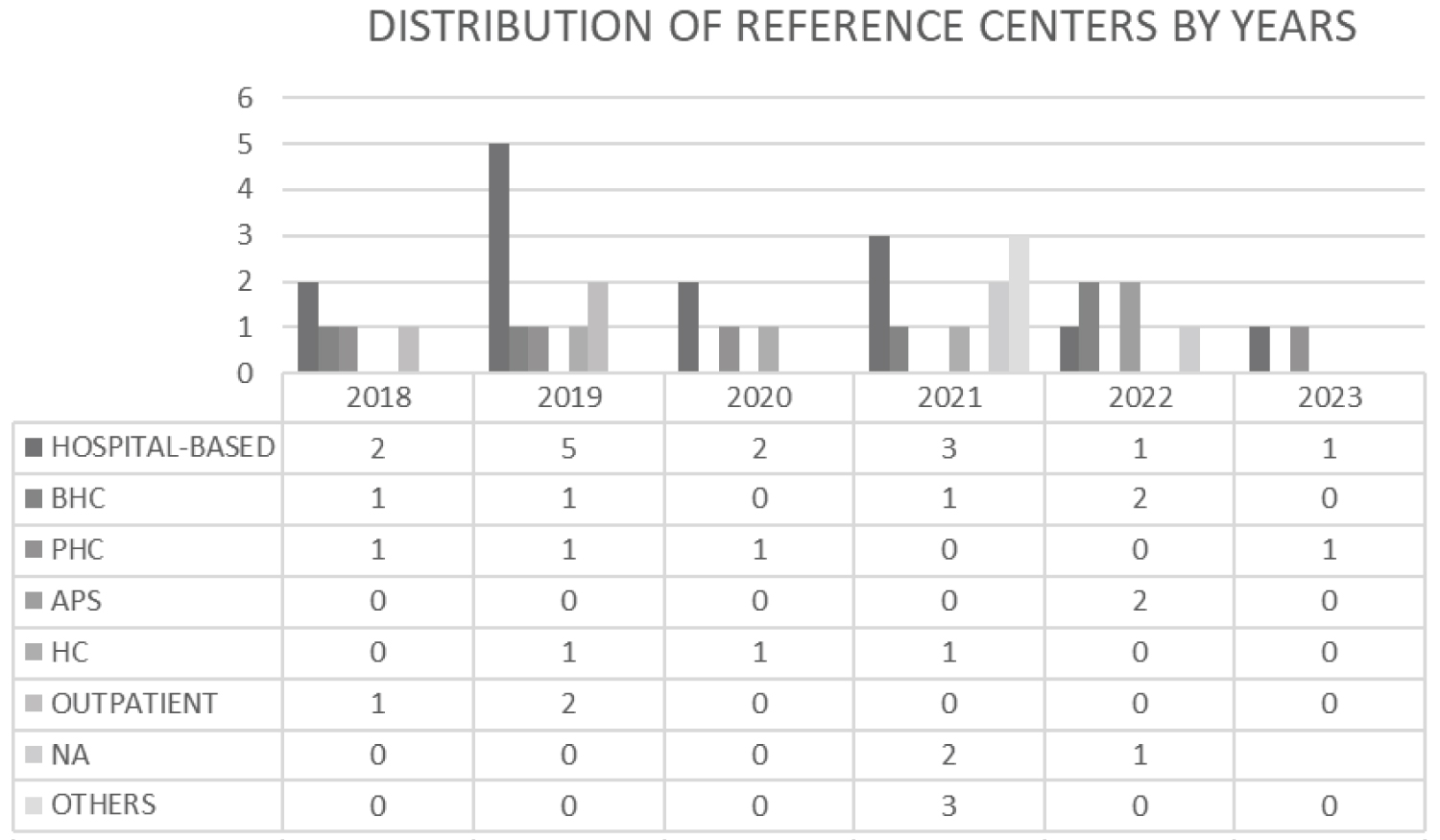Brazil is the only country in the world with over 100 million inhabitants that has a public, universal, and free system for the entire population. It is estimated that those who have health insurance and/or better financial conditions do not use the SUS (Unified Health System), but everyone uses it, whether directly or indirectly, when acquiring medications from popular pharmacies, using vaccines, or when food is monitored through health surveillance systems. Thus, this study aimed to understand the sociodemographic profile of users of the Unified Health System (SUS). An integrative review was conducted in the Latin American and Caribbean Health Sciences Information database (BIREME), as well as in the Scientific Electronic Library Online (SciELO), through the US National Library of Medicine (PubMed) and Web of Science, using the descriptors "Unified Health System," "Health Profile," "Health," and "Health Services." The keywords used were "Sociodemographic" and "User." Among the 38 studies analyzed, a considerable social participation of a total of 4,126,846 participants with different characteristics, such as gender and age, is noted. The review showed that the most regular users in the public sector are female, using hospital services, and aged between 20 and 59 years, and the most common research on user profiles was conducted in the years 2019 and 2021.
Brazil is the only country in the world with over 100 million inhabitants that has a public, universal, and free healthcare system for the entire population. Unlike other countries with a similar population, none of them have a healthcare system that offers comprehensive care to all citizens. These developing nations have adopted insurance-based systems as an alternative to expand coverage, rather than creating a universal system [1].
The Unified Health System (SUS) was established in Brazil in 1988 through the Federal Constitution to transform the prevailing healthcare model and establish organizational principles of regionalization, decentralization, and popular participation, mandated as the state's responsibility. Prior to this, during the period of Military Dictatorship, healthcare was a right for those who engaged in remunerated activities and their dependents, contributing to the social security system. Since then, the assurance of healthcare based on principles of universality, equity, and comprehensiveness has been guaranteed, and it currently encompasses one of the largest and most complex public healthcare systems globally [2].
It is estimated that those with health insurance and/or better financial conditions do not use SUS, yet in reality, everyone makes use of it, either directly or indirectly. This includes not only basic healthcare and hospital services but also acquiring medication from pharmacies, getting vaccinated, purchasing items from supermarkets or bakeries, and even dining at restaurants. While 34.3% of Brazilians claim to have never used the system, this is unlikely, indicating that a significant portion of the population still lacks awareness of its full scope. In this case, we can assert that 100% of Brazilians use, have used, or will use SUS [3].
For instance, in China, the public healthcare system is not free. There are public and private health insurance options, with public insurance funded jointly by employees, employers, and the government. Depending on whether the region is urban or rural and more or less developed, the percentage of government subsidies varies, showing notable improvements and investments over time [4].
In contrast, in the United States, there is no universal healthcare system, and individuals are required to pay for medical care and medication. In hospitals, patients without health insurance may not receive treatment. While the government subsidizes insurance plans for specific groups such as the elderly or low-income individuals, even for them, medical care and medications are not free. Between 2013 and 2016, 66.5% of bankruptcy filings in the US were linked to healthcare-related debts [5].
Information from the second volume of the 2019 National Health Survey (PNS), conducted in partnership with the Ministry of Health, provides data on malnutrition, overweight, obesity, as well as information about Primary Healthcare and visits by healthcare agents among the population over 18-years-old. In that year, 17.3 million (10.7%) people sought some form of Primary Healthcare service in the six months preceding the interview. Among them, 69.9% were women; 53.8% were unemployed, and 64.7% had a per capita household income lower than one minimum wage. The study examined characteristics such as gender, age groups, ethnicity, and marital status of users of these services in the six months prior to the interview. It revealed that 69.9% were women; 60.9% were black or mixed-race; 65.0% were married, and 35.8% were aged between 40 and 59. The survey also demonstrated that 64.7% of Primary Healthcare users had a per capita income lower than one minimum wage, showcasing that the Unified Health System provides assistance regardless of family financial conditions [6].
Analyzing the state of the art regarding user profiles within the healthcare system, particularly in primary, secondary, and tertiary care, studies were found that focused on specific municipalities or diseases, correlating with the specific demographic served. A review on this proposed topic is necessary to comprehend the target population of the system and subsequently contribute to the development of tailored strategies for the population.
The aim of this study was to understand the sociodemographic profile of users of the Unified Health System (SUS).
The study is an integrative literature review, based on the steps proposed by Whittemore and Knafl, guided by the question: "What is the sociodemographic profile of users of the Unified Health System (SUS)?" Searches were conducted in the Latin American and Caribbean Health Sciences Information Database (BIREME), as well as in the Scientific Electronic Library (SciELO), via the US National Library of Medicine (PUBMED), and Web of Science. Standardized descriptors from the Health Sciences Descriptors (DECS) and the Boolean operator AND were used, resulting in the combination: "Sistema Único de Saúde"/"Unified Health System" AND "Perfil de Saúde"/"Health Profile" AND "Saúde"/"Health" AND "Serviços de Saúde"/"Health Service". The keywords used as search strategy were "Sociodemográfico" and "Usuário" (Sociodemographic and User).
The inclusion criteria adopted were full-text original articles published from 2018 to August 2023 in Portuguese and English languages. The exclusion criteria were duplicated articles across multiple databases and review articles.
The Rayyan software was used for data collection and selection management. The titles and abstracts were analyzed by three independent reviewers to evaluate studies based on inclusion and exclusion criteria, and the reasons for exclusion were documented in the review. Articles not meeting the thematic criteria or duplicates were excluded based on their title and abstract. Interpretive disagreements among the three reviewers during the information collection process were resolved through discussion with a fourth researcher.
After selection, each article was read in full, and a data collection and evaluation instrument developed by the researchers was applied. The instrument included items such as author, year of publication, research types, number of participants, specialty, reference center, age, and gender.
The search for articles that met the research criteria is described in Figure 1. The overview of studies separated by year is presented in Figure 2 and Table 1.
 Figure 1: Flowchart of article selection process included in the study.
View Figure 1
Figure 1: Flowchart of article selection process included in the study.
View Figure 1
 Figure 2: Distribution of articles by year (n = 38).
View Figure 2
Figure 2: Distribution of articles by year (n = 38).
View Figure 2
Table 1: Distribution of Studies (n = 38). View Table 1
After a thorough reading of the selected articles and the compilation of the table, it was possible to present the objective results through graphs for better illustration. Table 2 displays the proportion of articles from each database. Figure 3 illustrates the gender distribution in primary care and hospital services by year. Figure 4 depicts the distribution of research related to each reference center. Table 3 provides a description of research by age range of participants.
 Figure 3: Gender distribution by year.
View Figure 3
Figure 3: Gender distribution by year.
View Figure 3
 Figure 4: Distribution of reference centers by years.
View Figure 4
Figure 4: Distribution of reference centers by years.
View Figure 4
Table 2: Distribution of articles initially gathered and after analysis based on inclusion and exclusion criteria in the databases (period between 2018 and 2023). View Table 2
Table 3: Distribution by age group. View Table 3
Among the 38 studies analyzed, there is a considerable social participation of a total of 4,126,846 participants, with different characteristics such as gender and age. The review showed that the most frequent users in the public sector are females, in hospital services, aged between 20 and 59 years. The most conducted research on user profiles was carried out in the years 2019 and 2021.
The most important source of scientific research in Brazil, the Portal of Scientific Journals, national and international, maintained by the Coordination for the Improvement of Higher Education Personnel (CAPES), recorded its highest number of accesses in 2020 since its creation 20 years ago. This achievement resulted in an increase in publications in the following year. According to the research related to this article, the years 2019 and 2021 stood out in terms of publication numbers compared to the last 5 years, as shown in Figure 2 [41].
In Figure 3, we can observe the quantification of female, male, and Not Applicable (NA) participation in publications from 2018 to August 2023. The greater participation of females compared to males in the reference services of the Unified Health System (SUS) in the researched articles is noticeable. However, this representation was not always the case, but with the continuous efforts of feminist movements, the Comprehensive Women's Health Care Policy (PAISM) was created in 1983, establishing the perspective of gender equality in the country's healthcare, becoming a fundamental reference for women's health advocacy to this day [42].
According to the National Health Survey (PNS) of 2019, among the respondents, the proportion of women who consulted a doctor was on average 82.3%, which is higher than that of men who had a percentage of 69.4%, confirming the assertion that women take more care of their health compared to men [6].
The present study found that users benefit from various reference centers, including hospital-based, Basic Health Units (UBS), Family Health Strategy (ESF), Primary Health Care (APS), Home Care (AD), and outpatient services, among others. However, the distribution is not balanced, with hospital-based care being the most common. This imbalance might be influenced by cultural factors, as Brazil has historically been curative-oriented, leading to overcrowding of tertiary healthcare facilities instead of primary care centers. This tendency towards curative medicine over preventive medicine reflects the current scenario where hospitals receive more patients than primary healthcare centers, which is also influenced by economic considerations as hospital services tend to be more expensive and complex than basic care services [43].
The prevalence of hospital-based care over other reference centers during the analyzed period may also be influenced by the COVID-19 pandemic. Many outpatient appointments, home care services, and other strategies were suspended or reorganized for a certain period to control the virus spread. Therefore, during this period, hospital-based studies tended to be more prominent and abundant since hospitals were among the few healthcare facilities that remained operational during the pandemic [44].
In addition to hospital-based care, other reference centers such as Basic Health Units (UBS), Family Health Strategy (ESF), and Home Care should also be highlighted. This emphasizes the importance of a generalist approach and explains the dominance of Family Medicine as a specialty in the studied articles during the period from 2018 to August 2023. This specialty constitutes one of the main pillars of Primary Health Care, which is essential for the optimal functioning of the SUS [45].
During the analyzed period in this study, articles with clinical and surgical approaches from various specialties were selected, indicating that adults aged 20 to 59 are the most frequent users of the Unified Health System (SUS). Conversely, there is also a significant presence of elderly individuals aged over 60 in healthcare services. In 2018, according to the Longitudinal Study of Brazilian Elderly Health (Elsi-Brasil), 75.3% of the elderly relied exclusively on services provided by SUS. Thus, the population is aging, resulting in an inversion of the age pyramid, and increasing the need for elderly care [46].
The profile identified from the analysis of the articles studied for this integrative review, published within the last 5 years, particularly in 2019 and 2021, predominantly consists of female users. Hospital services were the preferred choice, particularly for individuals aged between 20 and 59 years. This profile aligns with data collected by the Brazilian Institute of Geography and Statistics (IBGE) in the National Health Survey (PNS), reinforcing the credibility of this study.
Despite the increasing number of users in the system, the SUS operates in a regionalized manner due to the vast territorial extent of the country, which results in varying demands. Therefore, the found research is more regionally focused, which could pose a limitation to the study, but it also contributes to national data. Additionally, there are limitations in the collected data due to the analysis period ending in August 2023, excluding the remaining four months of potential new publications.
The research showed that the most frequent users in the public sector are females, using hospital services between the ages of 20 and 59 years. The most conducted research on user profiles was carried out in the years 2019 and 2021. The SUS covers a wide range of health areas and different profiles of citizens, from various regions and vulnerabilities, thus reaching the entire Brazilian population and immigrants. Specifically, in primary and specialized care, there is a predominant group that benefits from this public service, although a significant portion of individuals still opt for private health services despite the availability of free care.
Understanding the sociodemographic profile of the most frequent users enables the targeted implementation of campaigns and interventions tailored to the target population's needs. Research in this area is crucial to improve the direction and consequently the quality of interventions in Brazil's public health. Due to the country's vast size, regional research is necessary to address different demands in different localities.
None.
Gabriela Torino dos Reis, Giovanna Akemi Yoshioca, Luiza Malosti Matias participated in the conception, writing, data collection; Cristiana Maria de Araújo Soares Gomes participated in the review and preparation of the article; Natália Abou Hala Nunes participated in the conception, writing, data collection, methodology, review.